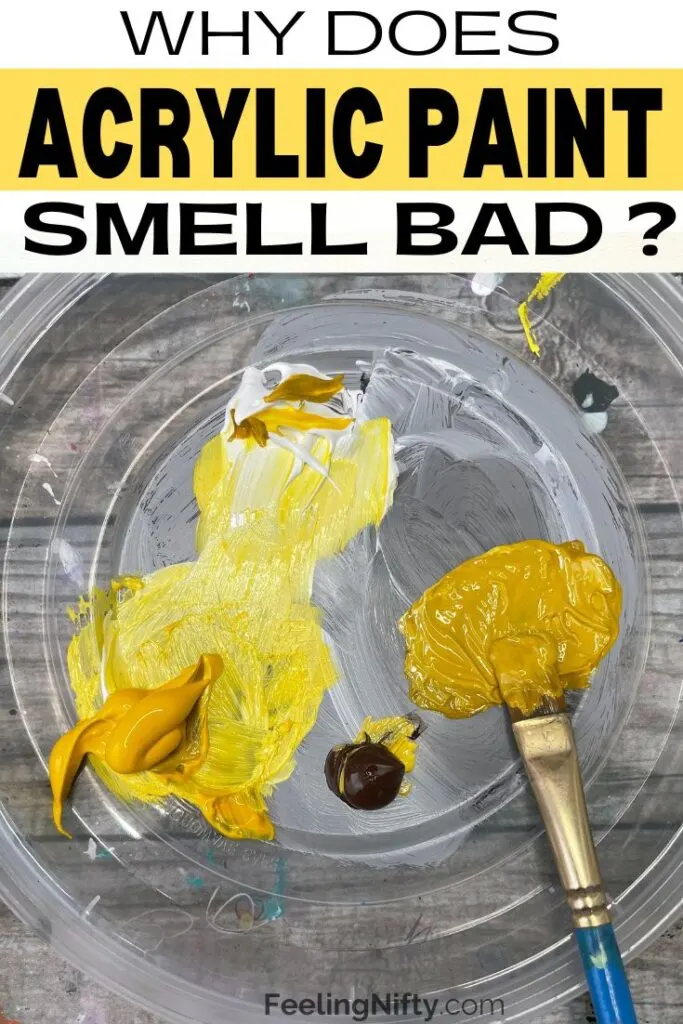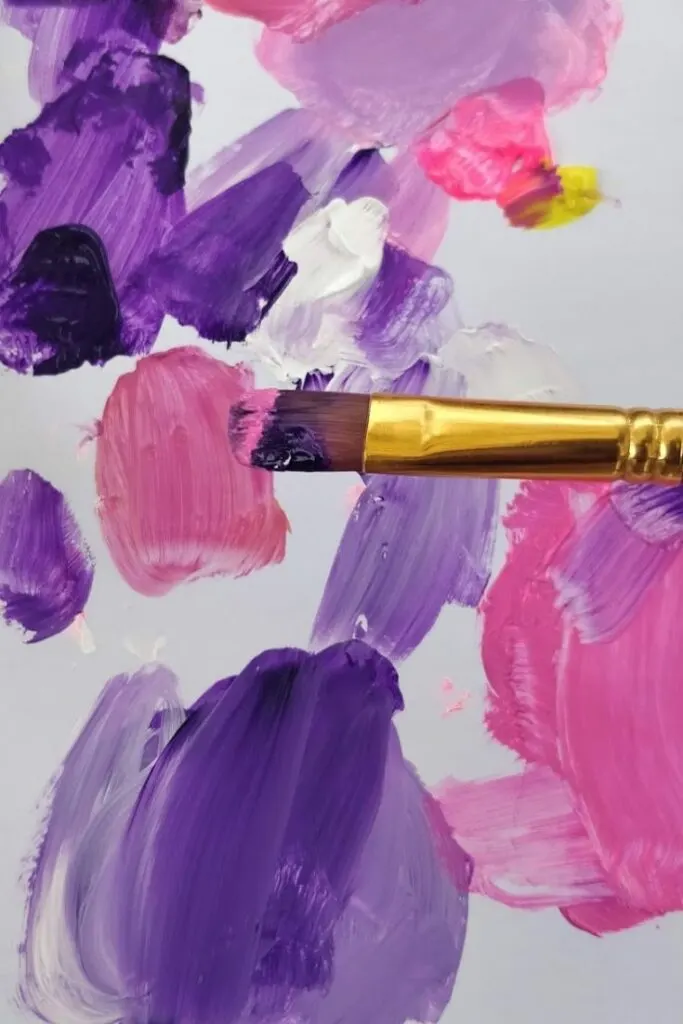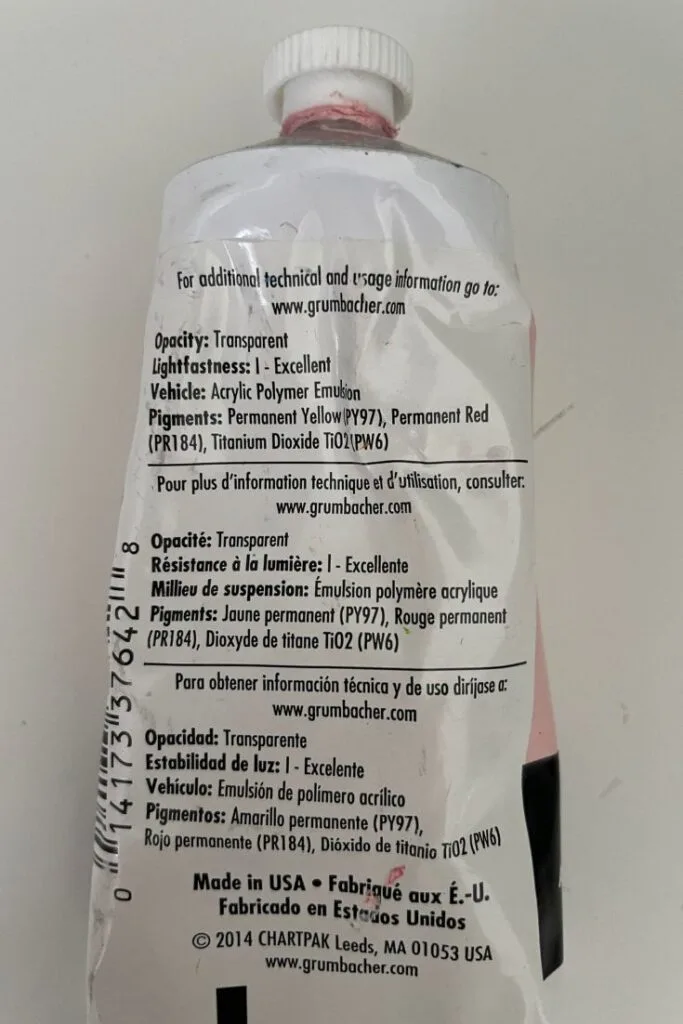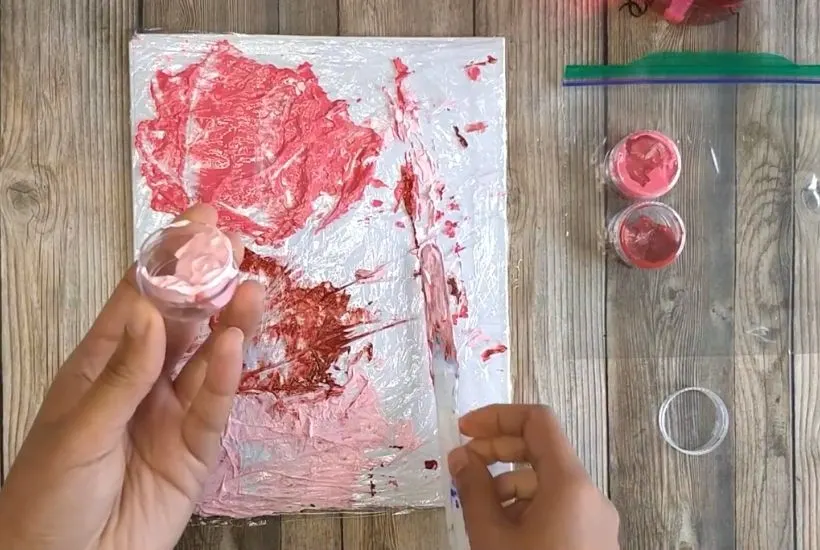Acrylic paints are a popular choice for all kinds of art, canvas painting ideas, DIY home decor, crafts and other projects. While you may have acrylic paints that do not smell at all, there may be others that catch your nose’s attention. If you notice a distinct odor coming from your acrylic paint, there are a few reasons why.
Acrylic paints smell bad because they have gone bad or because they contain preservatives. Expired paints often start to grow mold and will emit a sour stench, reminiscent of spoiled milk. New paints may emit a slight smell of ammonia or formaldehyde because these substances are used to increase the paint’s shelf life.
In this article, we’ll take a closer look at the reasons that your acrylic paints can start to smell bad. I’ll explore why some paints end up smelling bad while others do not and what you can do to make sure your paints stay fresh and ready to use.

Your Acrylic Paints May Have Expired
If you don’t use your acrylic paints very often, you may find that a tube of paint that used to smell fine has now taken on an unpleasant odor. The reason for this smell is simple – it’s likely that the paint has started to expire.
Much like food left in the fridge for too long, acrylic paints can expire and start to smell bad when kept in your home past their shelf life.
The length of the paint’s shelf life will depend on both the manufacturer and how you use it.

For example, if you often mix acrylics with water, the bacteria and microbes in your tap water can act as a contaminant. If you return unused wet paint to the original container, you risk it going bad quicker and developing a foul odor sooner than you expect.
Mold can grow inside the paint, especially if it is exposed to water and kept in a humid environment. The mold will certainly make the paint go bad and cause it to emit an extremely unpleasant odor.
In addition to an unpleasant smell, you may notice that the paint has become dry or separated inside its container. If left long enough, all of the paint can dry into a single, hardened solid. You will have no choice but to discard your paint if it reaches this point.
That said, catching your paint before it hardens into a solid mass doesn’t mean that you can keep using it. Lumpy paint is a sign that your paint is past its prime and needs to be replaced. Don’t spend too much time trying to mix it back together – the lumps are your tube of paint letting you know that it’s time for a replacement.
But if the paint doesn’t smell bad and instead has just separated you can just re-mix it. Sometimes over time, the pigment in acrylic paint separates from the binder medium and the polymer emulsion.

Depending on the manufacturer, you can expect your acrylic paints to last between 5 to 7 years when stored in ideal conditions. If you are curious about the shelf life of your favorite brand of paints, you can check their website to see what their predicted lifespan is.
Remember, mold and expired chemicals are not good for your health, so be careful when checking your paints. Avoid holding the tube directly under your nose or inhaling too sharply. You can try squeezing a bit of paint out of the tube and seeing if you catch a foul odor. If you can visibly see mold in the paint, it’s time to throw it out.
You May Be Smelling Preservatives

To counteract the issue of expiration, many manufacturers add preservatives to their paints. These include formaldehyde, ammonia, and other preserving chemicals.
While the preservatives increase the lifespan of your paint, they can also result in a slight odor that you may find unpleasant.
The smell should be faint and not as strong as you will experience when working cleaning agents or other household substances that use the same chemicals. However, if you are sensitive to these compounds, consider choosing a brand of acrylics with a low odor or no preservatives at all.
How to Store Your Acrylic Paints to Extend their Lifespan
In order to do what you can to prolong the life of your acrylics, you will want to store them as carefully as possible. Make sure that no water or moisture is unable to enter your paint tubes. Additionally, make sure that they are not exposed to extreme temperatures.

Exposure to air will also age your paints and cause them to expire faster. Make sure the cap is sealed tightly every time you finish using your paint. It is common for paint to dry around the seal of the cap, making it difficult to close the tube properly. Make sure you clean this area so that you can maintain an airtight seal.
How to Get Started With Acrylics
If you’ve never used acrylic paint before or are just looking to improve your skills with them, there are numerous options available to learn how to work with your new paints. As an artist, you may be more comfortable with a visual medium. If this is the case, there are several YouTube videos you can refer to for help.
Before you can start with making art, you should have your techniques down pat. You can refer to this YouTube video for help with some basic techniques that will go a long way when you start painting in earnest:
Once you’re confident in your techniques, it’s time to experiment with a few pieces before you can move on to working freehand. Here’s a YouTube tutorial on how to paint a mermaid for beginners that will help you find your footing when working with acrylic paints:
Once you get the hang of handling acrylics, the sky’s the limit for what you can paint! Continue to experiment with your paints while making sure to store them properly to ensure that each of your tubes has a long, colorful lifespan.
Final Thoughts
If you think your acrylic paint smells a bit funny, don’t be alarmed. There are a few reasons it might have an unpleasant odor. If it is an old tube of paint and hasn’t been stored carefully, it is likely to expire and needs to be discarded.
If it is a new tube of paint and still smells unusual, it might be the preservatives used inside. You can consult with the manufacturers to see what options exist for low-odor paints. This is especially important if you are allergic to or sensitive to chemical preservatives.
If you liked this post please pin it

